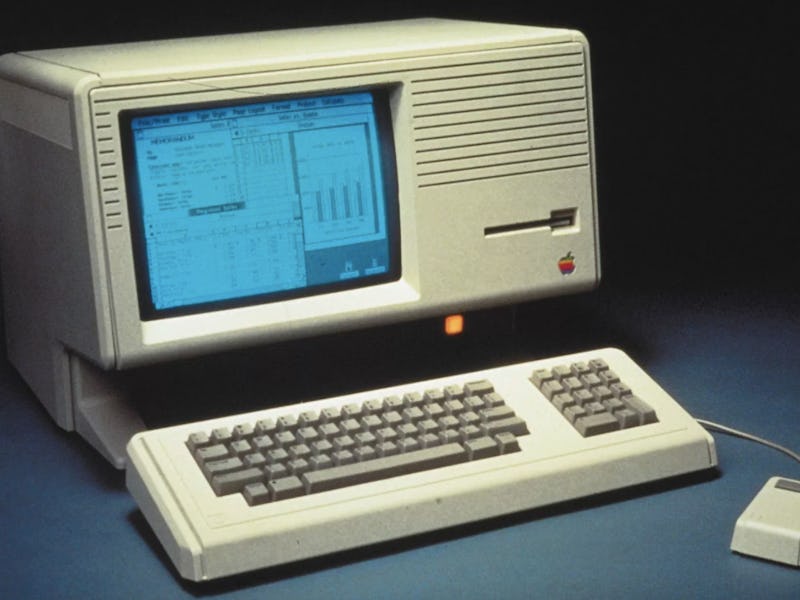35 Years Ago, the Historic "Apple Lisa" was Born
And it was a revolutionary flop.

On January 19, 1983, the first commercial personal computer from Apple was born. Ahead of its time, the Lisa featured a stout white monitor, a white keyboard, square mouse, double floppy drive — and a really high price tag. Originally retailing for $9,995, the Lisa was a bit of a flop upon its release.
The high price point — equivalent to around $25,000 nowadays — was compounded by a relatively small 5 megabyte hard drive and especially unreliable, “Twiggy” floppy disks.
Following its lackluster sales, Apple co-founder Steve Jobs — who had spearheaded the multi-million dollar development of the Lisa — was removed from the project, and transferred to work on the Macintosh.
The less expensive (and less technically agile) Mac computer was released in 1984 and quickly outpaced the Lisa in sales. But the Lisa was actually a pretty revolutionary machine, despite its excruciating cost. It featured an advanced file system and protected memory for its operating system, a system that paved the way for the macOS most of us use today.
Check out this bizarre commercial featuring Kevin Costner for the Lisa:
Officially, Lisa stood for “Local Integrated Software Architecture”, but it was also the name of Steve Jobs’s daughter — born in 1978, the year the project was started.
Two years later, Apple innovated the OG Lisa and released the Lisa II, which used a single 400k Sony microfloppy and was priced lower; between $3,495 and $5,495.
The Apple Lisa II Personal Computer that is in the Smithsonian.
Because of the Lisa’s limited time on the market, it’s actually something of a collector’s item among Apple heads. There were only about 100,000 original Lisas ever made. “Since original Lisas were often upgraded free-of-charge to a Lisa 2, very rarely can you find a working model with its original components,” writes Apple Museum.
Happy birthday, Lisa!
The groundbreaking computer even made it to the Smithsonian — but it’s not on public display.